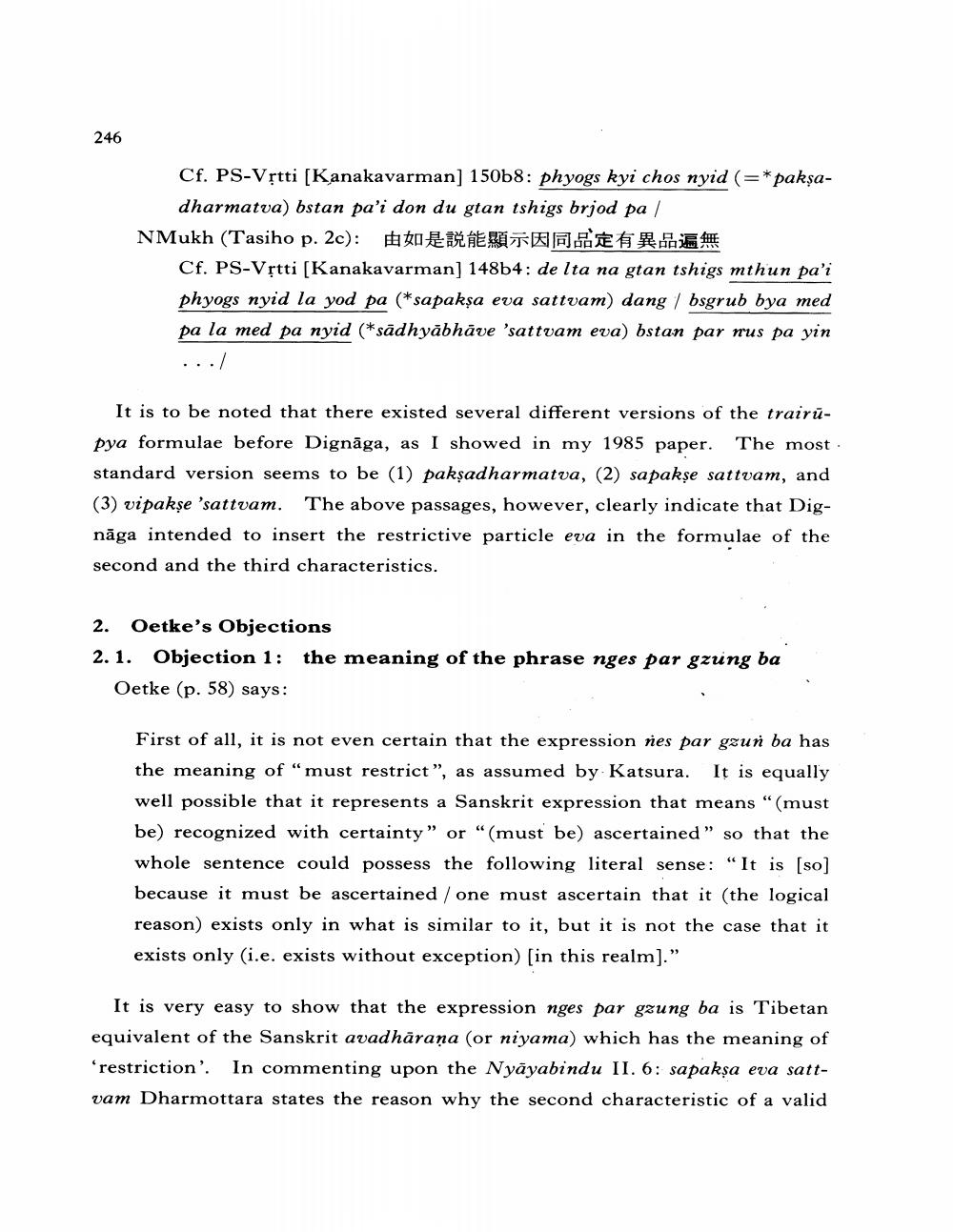Book Title: Dignaga On Trairupya Reconsidered Author(s): Shoryu Katsura Publisher: Shoryu Katsura View full book textPage 6
________________ 246 Cf. PS-Vṛtti [Kanakavarman] 150b8: phyogs kyi chos nyid (=*pakṣadharmatva) bstan pa'i don du gtan tshigs brjod pa / NMukh (Tasiho p. 2c): 5 f Cf. PS-Vrtti [Kanakavarman] 148b4: de Ita na gtan tshigs mthun pa'i phyogs nyid la yod pa (*sapaksa eva sattvam) dang bsgrub bya med pa la med pa nyid (*sādhyābhāve 'sattvam eva) bstan par rus pa yin ../ It is to be noted that there existed several different versions of the trairupya formulae before Dignaga, as I showed in my 1985 paper. The most. standard version seems to be (1) pakṣadharmatva, (2) sapakṣe sattvam, and (3) vipakṣe 'sattvam. The above passages, however, clearly indicate that Dignāga intended to insert the restrictive particle eva in the formulae of the second and the third characteristics. Oetke's Objections 2.1. Objection 1: the meaning of the phrase nges par gzung ba Oetke (p. 58) says: First of all, it is not even certain that the expression nes par gzun ba has the meaning of "must restrict", as assumed by Katsura. It is equally well possible that it represents a Sanskrit expression that means "(must be) recognized with certainty" or "(must be) ascertained" so that the whole sentence could possess the following literal sense: "It is [so] because it must be ascertained / one must ascertain that it (the logical reason) exists only in what is similar to it, but it is not the case that it exists only (i.e. exists without exception) [in this realm]." It is very easy to show that the expression nges par gzung ba is Tibetan equivalent of the Sanskrit avadharana (or niyama) which has the meaning of 'restriction'. In commenting upon the Nyayabindu II. 6: sapaksa eva sattvam Dharmottara states the reason why the second characteristic of a validPage Navigation
1 ... 4 5 6 7 8 9 10 11 12 13 14 15 16 17 18 19 20 21 22 23 24 25 26
